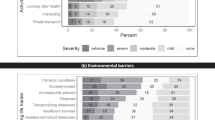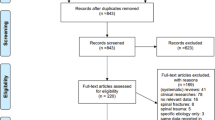Abstract
Objective: To determine the long-term mortality rate and the types of morbidity among all people with spinal cord injuries (SCI) that occurred during the 1948 Israel War of Independence.
Method: Chart review and telephone interviews for collecting demographic data, injury characteristics, marital status, physical activities, employment, morbidity and mortality.
Results: Twenty individuals with SCI (19 males, one female). There was no regular follow-up during the first 20 years post injury. The most frequent morbidities were genito-urinary, cardiovascular and decubiti. Ten (50%) had died during this overall follow-up interval. The average age at death was 60 years. The cause of death was cardiovascular in six, neoplastic disease in two, pneumonia in one, and one died from an unknown cause.
Conclusions: The data analysis showed that those who died participated less in physical activity and fewer were employed as compared to the survivors.
Similar content being viewed by others
Log in or create a free account to read this content
Gain free access to this article, as well as selected content from this journal and more on nature.com
or
Author information
Authors and Affiliations
Rights and permissions
About this article
Cite this article
Zeilig, G., Dolev, M., Weingarden, H. et al. Long-term morbidity and mortality after spinal cord injury: 50 years of follow-up. Spinal Cord 38, 563–566 (2000). https://doi.org/10.1038/sj.sc.3101043
Published:
Issue date:
DOI: https://doi.org/10.1038/sj.sc.3101043
Keywords
This article is cited by
-
Targeting bladder function with network-specific epidural stimulation after chronic spinal cord injury
Scientific Reports (2022)
-
The prevalence of pulmonary embolism in chronically paralyzed subjects: a review of available evidence
Spinal Cord (2012)
-
Homocysteine and hypertension in persons with spinal cord injury
Spinal Cord (2006)
-
Survival following spinal cord injury in Israel
Spinal Cord (2002)



